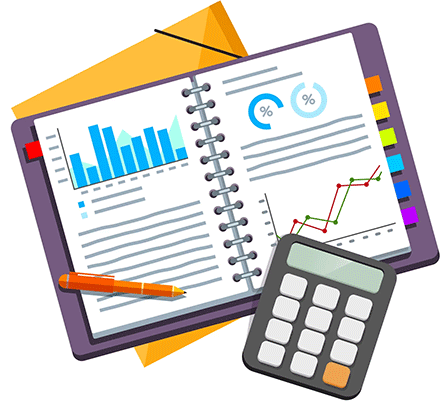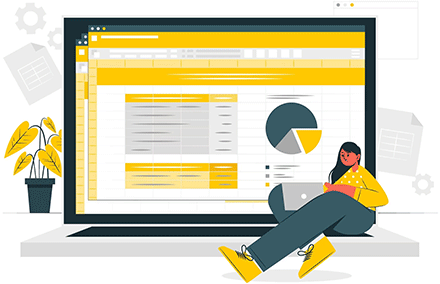In this article, we will discuss key factors to consider when assessing a forex broker's leverage offering.
Leverage is essentially a loan provided by the broker to the trader, allowing them to open larger positions than their account balance would normally permit. It is expressed as a ratio, such as 50:1, 100:1, or 500:1, indicating the amount of leverage the broker offers.
Leverage is a fundamental concept in Forex and CFD trading, and it can be a powerful tool when used correctly. For novice traders seeking an answer to the question, "What is leverage in trading?" this guide provides an in-depth exploration of leverage's mechanics, advantages, disadvantages, and best practices.
What Is Leverage in Trading?
Leverage is a financial instrument that allows traders to control larger positions with a smaller initial capital. It amplifies the potential returns on investments, making it an attractive option for traders aiming to maximize profits. In essence, leverage allows traders to borrow capital from their broker to increase their trading power. When a leveraged trading position is closed, the borrowed capital is returned to the broker, and the trader receives the profit or covers the loss. To initiate and maintain a leveraged position, traders are required to provide a fraction of the position's value as collateral, known as the margin. Leverage is typically expressed as a ratio, indicating the relationship between the trading position size and the margin.
For example, if you have a leverage ratio of 1:30, you can open a position 30 times the size of your margin. This multiplication factor applies to both profits and losses, making leverage a double-edged sword.
How Does Leverage Work in Forex Trading?
To illustrate how leverage works in Forex trading, let's consider an example. Suppose a trader has access to leverage of 1:20 and wants to buy £100,000 worth of GBPUSD (one standard lot). To calculate the margin required to open the position, divide the total position value by the leverage factor. In this case, the required margin is £5,000 (£100,000 / 20). The trader must deposit this amount to gain exposure to a £100,000 position. Now, let's examine how leverage affects potential returns by comparing a leveraged trade with an unleveraged trade of the same size.
Forex Leverage Example
| Leveraged Trade | Unleveraged Trade | |
| Leverage Ratio | 1:20 | N/A |
| Investment | £5,000 | £5,000 |
| Exposure | £100,000 | £5,000 |
| GBPUSD Increases 5% | + £5,000 | + £250 |
| GBPUSD Decreases 5% | - £5,000 | - £250 |
As shown, leverage magnifies the trader's potential gains by a factor of 20 when the market moves favorably. However, it can also amplify losses by the same factor if the market moves against the trader. This underscores the importance of using leverage judiciously.
Why Do Brokers Offer Leverage?
Brokers offer leverage as it can attract traders looking to maximize their trading power and potential profits. Brokers earn money through trading fees, including commissions and spreads. Larger trading positions generate higher fees for brokers, making leverage an attractive offering. Additionally, leveraged positions that are held overnight may incur interest charges known as swap fees, which vary depending on the asset and the broker. Brokers use these fees to generate additional revenue.
The Advantages and Disadvantages of Leverage in Forex
Advantages of Leverage
- Access to Larger Positions: Leveraging enables traders to access significantly larger positions than their initial capital permits, potentially leading to more substantial profits.
- Potential for Higher Returns: Larger position sizes can result in higher returns compared to trading without leverage, especially in markets with price volatility.
- Capital Efficiency: Leveraging allows traders to optimize their capital usage by maintaining a smaller cash balance in their trading accounts while accessing larger positions. This can free up funds for other investment opportunities.
However, it is important to remember that larger positions also entail more significant risks, especially if market movements are unfavorable.
Disadvantages of Leverage
- Increased Losses: Even minor market movements in the opposite direction can amplify losses, potentially depleting your entire account balance.
- Margin Calls and Liquidation: Leveraged trading necessitates maintaining a specific amount of equity (initial margin) in your account to cover potential losses. Falling below this threshold triggers a margin call, compelling you to deposit more funds or close positions to meet margin requirements. Failure to do so may lead to position liquidation by the broker, resulting in significant losses.
- Interest Charges on Borrowed Funds: Since leverage involves borrowing funds from your broker, it accrues interest charges over time, depending on the duration of the position. These charges reduce overall profits or add to losses.
- Overleveraging: Some traders engage in excessive leveraged trading, risking more than they can afford to lose. This fear of missing out (FOMO) mentality can lead to severe financial consequences.
- Limited Risk Management: Many traders overlook the importance of risk management in leveraged trading, making it critical to practice prudent money management.
- Faster-Paced Trading: Leveraged trading often involves short-term strategies in a fast-paced environment, which can lead to stress, impulsive decisions, emotional trading, and costly mistakes.
To manage potential losses associated with leverage trading, it is essential to employ effective risk management strategies, including stop-loss orders, continuous position monitoring, and disciplined trading decisions. Moreover, ensure that you possess the necessary knowledge and experience before engaging in leveraged trading. Understanding leverage in trading is essential for traders of all levels. While leverage can be a powerful tool for maximizing profits, it also carries significant risks. Therefore, responsible and cautious use of leverage is critical for long-term trading success.
- Use leverage judiciously: Be cautious when utilizing leverage and ensure it aligns with your risk tolerance and trading strategy.
- Implement risk management: Develop a robust risk management strategy to mitigate the potential impact of leveraged losses.
- Learn from demo accounts: If you're new to trading with leverage, practice on a risk-free demo account to gain experience without real financial exposure.
- Stay informed: Keep abreast of changes in leverage regulations, as they may vary by region and asset class.
- Consult experts: Seek advice from experienced traders or financial professionals to refine your approach to leverage and risk management.
By mastering leverage, traders can harness its potential while safeguarding their capital and trading careers. Remember that responsible trading practices are the key to long-term success in the dynamic world of Forex and CFD trading.
Factors to Consider When Evaluating Leverage
- Regulatory Compliance. The first and foremost consideration when evaluating a broker's leverage offering is regulatory compliance. Different regulatory authorities impose varying limits on leverage to protect traders from excessive risk. Brokers should adhere to these regulations to ensure the safety of their clients' funds. Ensure the broker is regulated by a reputable authority and complies with leverage restrictions in your region.
- Risk Tolerance. Before selecting a broker, traders must assess their own risk tolerance. Leverage can magnify both profits and losses, so it's crucial to choose a leverage level that aligns with your risk appetite. Novice traders or those with low risk tolerance may opt for lower leverage, while experienced traders might be comfortable with higher ratios.
- Trading Strategy. Your trading strategy plays a pivotal role in determining the appropriate leverage. Long-term investors may require lower leverage, while day traders or scalpers might benefit from higher leverage for short-term positions. Consider the frequency and duration of your trades when assessing a broker's leverage options.
- Asset Class. Different asset classes have varying levels of inherent volatility. Currency pairs, for instance, tend to be less volatile than commodities or cryptocurrencies. Your choice of assets should influence your leverage decision. Some brokers offer different leverage levels for different asset classes.
- Margin Requirements. Margin requirements dictate the amount of capital you need to maintain in your trading account to support your leveraged positions. Brokers may have different margin call and stop-out levels. Understanding these requirements is crucial to managing risk effectively.
- Broker Reputation. Research the broker's reputation and track record. Read reviews, check for any regulatory violations, and seek recommendations from other traders. A reputable broker is more likely to provide fair and transparent leverage conditions.
- Education and Support. Look for brokers that offer educational resources and support to help traders understand the implications of leverage. Adequate knowledge is essential for responsible trading with leverage.
Leverage can be a double-edged sword in forex trading. While it offers the potential for significant profits, it also exposes traders to substantial risks. Therefore, evaluating a forex broker's leverage offering is a critical step in your trading journey. Consider regulatory compliance, your risk tolerance, trading strategy, asset class, margin requirements, broker reputation, and available education and support. By making an informed decision about leverage, you can leverage your chances of success in the forex market while managing risk effectively. Remember that responsible trading practices are the key to long-term success.
Leverage Trading: Risks and Rewards
Leverage trading is a potent tool that can amplify both gains and losses in financial markets. To paraphrase Warren Buffett, it can yield interesting results when combined with ignorance. While leverage has the potential to significantly boost returns, it also carries substantial risks, especially for those lacking the knowledge and experience to navigate its complexities.
In this comprehensive guide, we will delve into the fundamentals of leverage trading, explore how it works, discuss the role of leveraging, and underscore the importance of comprehending the potential pitfalls and benefits involved. By gaining a deeper understanding of this trading method, you can make informed decisions about whether leverage trading aligns with your investment strategy.
Understanding Leverage Trading
Leverage trading, also known as margin trading or trading on margin, empowers traders to control larger positions with a relatively small amount of capital. This strategy is applicable across various financial markets, including Forex, indices, stocks, commodities, and ETFs. While leverage trading has the potential to magnify both profits and losses, it offers traders the opportunity to generate higher returns using a smaller initial investment.
Leverage trading entails borrowing funds from a broker to increase your position size, leading to more exposure to market movements and potential profits. However, it is crucial to recognize that leveraging also heightens the risks associated with trading. Thus, it is imperative to implement robust risk management strategies and attain a thorough grasp of how leverage trading operates.
The Mechanism Behind Increased Buying Power
Leverage is typically represented as a ratio, such as 2:1, 10:1, or higher, depending on the asset class and the broker's policies. A leverage ratio of 10:1 signifies that for every $1 of your own funds, you can borrow $9 from the broker, effectively enhancing your buying power. For instance, if you allocate $1,000 and decide to open a leveraged position with a 10:1 ratio, you can borrow $9,000 from the broker. Consequently, your exposure in the market totals $10,000. Clearly, this type of trading can lead to rapid gains or losses, depending on your ability to manage risk.
Profitability and Risks in Leverage Trading
Leverage trading has garnered popularity among traders looking to capitalize on small price fluctuations in various markets, including stocks, forex, commodities, and cryptocurrencies. However, many inexperienced individuals are drawn to these markets, enticed by the prospect of amassing wealth quickly. Unfortunately, this is a fallacy. While leverage trading can amplify potential profits, it can also result in significant losses, potentially erasing your entire account balance if the market moves against you. Consequently, responsible usage of leverage trading, grounded in a comprehensive understanding of risks, is essential for safeguarding your financial well-being.
To grasp how leverage trading functions, consider a practical example: Imagine you have $1,000 in your trading account and wish to trade a stock valued at $20 per share. Without leverage, you could acquire 50 shares ($1,000 / $20), resulting in a total investment of $1,000. Now, suppose you decide to leverage your position. Your broker offers a 10:1 leverage ratio, implying that for every $1 of your capital, you can borrow $9 from the broker. Consequently, your $1,000 can control a position valued at $10,000, with $9,000 borrowed from the broker. Using this 10:1 leverage, you can purchase 500 shares of the stock ($10,000 / $20), as opposed to just 50 shares without leverage.
Let's examine the scenario if the share price increases by 10%:
- Without leverage: Your 50 shares appreciate to $22 per share, resulting in a total investment worth $1,100. This yields a profit of $100 ($1,100 - $1,000).
- With leverage: Your 500 shares appreciate to $22 per share, making your total investment worth $11,000. However, you must repay the broker's borrowed $9,000, leaving you with $2,000. Consequently, you profit $1,000 ($2,000 - $1,000 from your initial investment).
Now, consider what occurs if the share price decreases by 10%:
- Without leverage: Your 50 shares decline to $18 per share, resulting in a total investment worth $900. This translates to a loss of $100 ($1,000 - $900).
- With leverage: Your 500 shares decrease in value to $18 per share, resulting in a total investment worth $9,000. After repaying the broker's borrowed $9,000, you are left with nothing, experiencing a complete loss of your initial $1,000.
This example illustrates how leverage trading can enhance profits, but it also underscores the potential for substantial losses, especially with higher leverage. Thus, while leverage trading promises higher returns, it is accompanied by significant risks. Therefore, it is imperative to approach it with caution and a clear understanding of potential outcomes.
Risk Management Strategies in Leverage Trading
Effective risk management is vital in leveraged trading. Here are some strategies to help mitigate potential losses:
- Start with a Conservative Leverage Ratio: If you are new to leverage trading or uncertain about market conditions, begin with a conservative leverage ratio. This limits potential losses while providing an opportunity to gain experience.
- Implement Stop Losses: Utilize stop-loss orders to close positions at predetermined price levels. These orders help limit losses and manage risk exposure.
- Regularly Monitor Positions: Stay vigilant by regularly monitoring your open positions and being aware of market movements that could impact your investments. Proactive monitoring enhances risk management.
- Emotional Control: Emotional trading decisions can lead to poor choices and heightened risks. Develop a disciplined trading plan, adhere to risk management strategies, and avoid impulsive decisions driven by fear or greed.
- Educate Yourself: Acquiring knowledge and experience is essential for successful leveraged trading. A solid education equips you with the skills to navigate various market conditions.
- Adjust Position Sizes: In volatile markets, adjust your position sizes to align with your risk tolerance and market conditions. Smaller positions can help mitigate risk.
- Have a Clear Exit Strategy: Develop a clear exit strategy for your trades, including profit targets and stop-loss levels. Knowing when to exit a position can lock in profits and limit losses.
- Practice with a Demo Account: Consider using a demo account to gain experience and confidence without risking real capital. Familiarize yourself with the broker's trading platform and test your strategies.
Choosing the Right Broker for Leverage Trading
Selecting the right broker is pivotal when engaging in leverage trading. A reputable broker will provide essential tools, resources, and support to help you understand the associated risks and opportunities. When choosing a broker, consider the following factors:
- Regulation and Reputation: Ensure the broker is regulated by a credible authority, such as the Australian Securities and Investments Commission (ASIC). Regulation offers protection for your funds and ensures a secure trading environment.
- Leverage Ratios Offered: Different brokers offer varying leverage ratios. Choose a broker that provides suitable leverage ratios based on your trading strategy and risk tolerance.
- Trading Platform: A user-friendly, reliable trading platform with charting tools and efficient order execution is crucial for leverage trading.
- Commissions and Fees: Compare commission rates, spreads, and fees among brokers. Beware of brokers offering excessively low fees, as they may compensate through wider spreads, potentially reducing your profits or increasing losses.
- Interest Rates on Margin: Compare margin interest rates offered by different brokers to minimize borrowing costs.
- Customer Support: Opt for a broker with responsive and knowledgeable customer support, available through various channels like phone, email, and live chat.
- Account Types: Ensure the broker offers account types that match your needs in terms of minimum deposit requirements, leverage ratios, and access to specific trading instruments.
- Execution Speed and Slippage: Fast, accurate order execution with minimal slippage is crucial in leveraged trading.
- Deposit and Withdrawal Options: Choose a broker with convenient, secure deposit and withdrawal methods, considering processing times and associated fees.
Top 10 High Leverage Forex Brokers for 2023: A Comprehensive Comparison
Trading in the Forex market can offer substantial profits, especially when using high leverage. However, this approach comes with increased risk. If you're considering high leverage trading, it's crucial to evaluate various factors, such as trading conditions, regulatory compliance, minimum deposits, and maximum leverage offered by brokers. In this comprehensive guide, we present the top 10 high leverage Forex brokers for 2023, providing you with insights into their offerings and key considerations for your trading journey.
- Exness stands out with its unlimited leverage option, which is accessible across all account types. Traders should exercise caution, as this high leverage is recommended for experienced traders. Requirements include account equity under $1000 and closing at least ten orders with a minimum total value of 5 lots. Leverage may be adjusted as account equity changes.
- InstaForex offers a wide range of trading conditions, including gold and silver trading, numerous currency pairs, and various account types like commission-based, commission-free, cent, segregated, and Islamic accounts. They provide access to popular trading platforms like MetaTrader 4 and MetaTrader 5, with leverage options ranging from 1:1 to 1:1000. InstaForex offers competitive swaps and low commissions.
- Forex4You stands out for its absence of minimum deposit requirements and low minimum transaction volume (0.01), offering leverage of up to 1:1000. They also provide various account types with stop-out levels of 10-20%. Forex4You maintains transparency with no hidden commissions, and traders can expect competitive spreads.
- FxPro offers MetaTrader 4, MetaTrader 5, cTrader, and Edge platforms, catering to traders of all experience levels. Leverage varies from 1:200 to 1:500, depending on the account type. FxPro prioritizes innovation, offers negative balance protection, and provides expert advisors for algorithmic trading.
- Vantage is known for offering high Forex leverage up to 1:500. They offer direct access to liquidity providers, resulting in tight spreads and competitive trading costs. The broker is regulated by multiple authorities, including the FCA, ASIC, VFSC, and CIMA. VantageFX offers over 250 trading instruments and copy trading options.
- XM Group caters to both beginners and professionals, offering various account types and platforms, including MT4 and MT5. Leverage goes up to 1:1000 for some accounts, but it's lower for clients under EU and AU regulation. XM Group maintains a low minimum deposit requirement of $5 and offers expert advisors for algorithmic trading.
- AMarkets offers exceptionally high Forex leverage, reaching up to 1:3000. Copy trading is also available, allowing investors to earn from profitable strategies. The broker offers a range of bonuses and is suitable for both beginners and professional algorithmic traders.
- Admirals is a globally recognized broker operating in more than 40 countries. It offers leverages up to 1:500, various trading instruments, and copy trading options. The broker is regulated by multiple authorities, including ASIC, FCA, and FSCA.
- Interactive Brokers, operating since 1977, offers leveraged trading in Forex and other asset classes, including cryptocurrencies. The broker is known for its regulatory compliance and advanced trading technology.
- Swissquote Bank, established in 1996, offers leverage of up to 1:500 for Forex trading. It operates under strict regulatory oversight and provides access to a wide range of financial instruments.
When considering high leverage Forex brokers for 2023, it's essential to assess your trading goals, risk tolerance, and experience level. Each of the listed brokers offers unique features and leverage options, allowing traders to select the one that best aligns with their trading strategies and preferences. Remember that while high leverage can amplify profits, it also increases the potential for significant losses, so trade responsibly and consider risk management strategies.
The Reality of Leverage Trading
It's essential to acknowledge the stark reality of leverage trading: Approximately 90% of individuals who engage in leveraged markets either lose most, if not all, of their funds or break even. The lifespan of most leveraged market traders is measured in weeks or months, not years. This fact underscores the marketing hype surrounding leverage trading. Brokers often promise rapid wealth accumulation to entice new traders. However, the statistics do not lie. Leveraged trading carries inherent risks, and without the requisite knowledge and skill, losses are almost inevitable.
One effective strategy to mitigate risk in leveraged trading is to allocate only a portion of your capital to short-term, highly leveraged markets. A prudent approach is to allocate 90% of your funds to a medium to long-term portfolio, reserving the remaining 10% for leveraged markets. The goal is for the 10% allocated to leveraged trading to achieve equal or superior returns compared to the other 90%.
This strategy is not only achievable but also repeatable with the necessary knowledge and skill. A proper trading education equips you to navigate highly leveraged markets successfully. This strategy is detailed in my latest book, "Accelerate Your Wealth: It's Your Money, Your Choice," which is available online and at reputable bookstores. By following this advice, you can position yourself among the 10% of traders who consistently profit from leveraged markets.
Is Leverage Trading Right for You?
Determining if leverage trading aligns with your financial goals and risk tolerance hinges on several factors:
- Risk Tolerance: Leverage trading entails significant risks, particularly the potential for substantial losses. If you have a low risk tolerance or are uncomfortable with significant losses, leverage trading may not be suitable.
- Trading Experience: Effective leverage trading necessitates the application of tested strategies and risk management principles. Novices must gain knowledge, skills, and experience to ensure long-term success.
- Financial Goals: Consider your financial objectives when evaluating leverage trading. If you seek higher returns and are willing to accept the associated risks, leverage trading might be appropriate. However, if capital preservation or gradual long-term growth is your primary focus, leverage trading may not align with your goals.
- Time Commitment: Leverage trading often requires vigilant monitoring of positions. If you cannot or do not want to dedicate the necessary time and effort, it may not be suitable for you.
- Emotional Control: Leveraged trading can be emotionally taxing, demanding quick decisions in a fast-paced environment. If emotional control is a challenge or you tend to make impulsive decisions under pressure, leverage trading may not be a good fit.
- Access to Capital: Despite leveraging, ensure you have sufficient funds to cover potential losses and margin requirements. Adequate financial buffer is crucial before engaging in leveraged trading.
- Diversification: If you already maintain a well-diversified investment portfolio and wish to add a high-risk, high-reward component, leverage trading may be suitable. However, if leveraged trading constitutes a significant portion of your overall portfolio, consider the potential risks and your ability to withstand losses. Limit your leveraged trading to no more than 10% of your total available capital.
To determine if leverage trading is appropriate, assess your risk tolerance, trading experience, and financial goals. If you choose to engage in leverage trading, incorporate robust risk management strategies and continuously educate yourself to enhance your prospects of success.
Leverage trading is a powerful tool that can amplify both profits and losses. While it offers the potential for higher returns, it comes with significant risks. To navigate leveraged markets successfully, you must implement robust risk management strategies, continually educate yourself, and have the necessary knowledge and experience. Choosing the right broker, understanding the associated costs, and acknowledging the stark reality of leveraged trading are essential steps in your journey. By following these guidelines and considering your risk tolerance and financial goals, you can make informed decisions about whether leverage trading is a suitable investment strategy for you.
Remember, an investment in education is one that pays dividends in the world of leveraged trading. Equip yourself with the knowledge and skills needed to trade confidently in all market conditions, and you'll be better prepared to navigate the intricacies of leverage trading.
Related Materials
Forex trading, an intricate dance of buying and selling currency pairs such as EUR/USD, GBP/USD, and USD/JPY, operates continuously five days a week. Often called foreign exchange trading, the core objective is to profit from shifts in currency pair values.
The forex market has witnessed a rise in the popularity of Percentage Allocation Management Module (PAMM) services, as both retail traders and institutional investors seek out ways to diversify their portfolios and earn passive income. As 2023 unfolds, it's pivotal to identify which brokers are at the forefront of offering top-notch PAMM services..
Copy trading, a revolutionary method in the trading world, has emerged as a boon for both seasoned traders and beginners. It's an automation process that allows traders to mirror the moves of more experienced counterparts.
If the concept of hedging in the world of Forex has left you intrigued, search no further. This comprehensive article will unravel the intricacies of Forex hedging, furnish you with a practical example of a Forex hedging strategy, and delve into the "Hold Forex Strategy" and more.
The Forex market is the largest financial market globally, with a daily trading volume exceeding $6 trillion. Forex trading has become increasingly accessible to retail traders, thanks to the proliferation of online Forex brokers. However, selecting the right broker is a critical decision that can significantly impact your trading success.
In the vast and dynamic landscape of global finance, the Forex market reigns supreme, presenting both unparalleled opportunities and significant challenges. At the heart of this complex ecosystem is the principle of risk management, a foundational pillar for anyone looking to navigate the often turbulent waters of Forex trading. In essence, risk management in Forex trading isn't merely a safety mechanism; it's an integral part of a holistic trading strategy, ensuring sustainability, promoting discipline, and maximizing the potential for success.
Brokers have a variety of ways in which they charge traders for their services. Understanding these fees and commissions is crucial for any trader who wants to manage their trading costs effectively.
The dynamics of the Forex market have dramatically evolved over the past few years, not just in terms of technology and tools, but also in how traders interact and share information...
Currency exchange rates are one of the most closely watched and analyzed metrics in the global financial market. Every day, businesses, tourists, governments, and traders seek to understand and anticipate changes in these rates, as they affect everything from the price of your morning coffee to billion-dollar business deals...
In the rapidly evolving world of online trading, where decision-making speed, strategy efficacy, and real-time responsiveness play crucial roles, preparation becomes paramount. This is where demo accounts enter the scene, offering aspirants and seasoned traders alike an invaluable platform. Designed to mimic real-world trading conditions without actual financial risk, demo accounts serve as a bridge between theoretical knowledge and real-world trading execution. They provide an arena for traders to practice, learn, and refine their strategies, ensuring they're equipped with the experience and confidence needed to navigate the often tumultuous waters of the financial markets.
Trusted Forex Brokers
| Broker | Review | Rating | |
|---|---|---|---|
| 1 | HF Markets | ||
| 2 | NordFX | ||
| 3 | Octa | ||
| 4 | FXCM | ||
| 5 | Interactive Brokers | ||
| 6 | ActivTrades | ||
| 7 | FXTM | ||
| 8 | easyMarkets | ||
| 9 | HYCM | ||
| 10 | SaxoBank | ||
| 11 | FxPro | ||
| 12 | Moneta Markets | ||
| 13 | XM | ||
| 14 | FOREX.com | ||
| 15 | Admirals | ||
| 16 | eToro | ||
| 17 | FIBO Group | ||
| 18 | Pepperstone | ||
| 19 | PrimeXBT | ||
| 20 | IronFX | ||
| 21 | Forex4you | ||
| 22 | InstaForex | ||
| 23 | INGOT Brokers | ||
| 24 | Swissquote Bank | ||
| 25 | Oanda |









